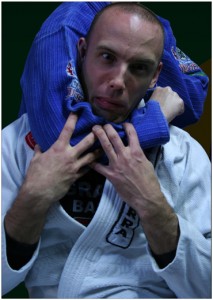 At the end of a BJJ class the other day, I played a game called “Group Fight” that, to me, underscored the inherent risks of fighting on the ground. I wanted to share some observations as they apply to our system of Krav Maga.
At the end of a BJJ class the other day, I played a game called “Group Fight” that, to me, underscored the inherent risks of fighting on the ground. I wanted to share some observations as they apply to our system of Krav Maga.
A brief background first: When I started training in Brazilian Jiu-Jitsu, my intention was to go to classes for a couple months to learn some good fundamentals to augment my Krav Maga training. Five years later… I won’t be invited to Abu Dhabi anytime soon, but my BJJ skills are competent. As Krav Maga practitioners we never want to fight on the ground if we can help it, but being acclimated to that type of fighting can only improve our odds of going home safe.
So, back to Group Fight. The rules are simple: The class is divided into two teams, and on “go” it’s a free-for-all with each team trying to eliminate the other’s members by submission (i.e. chokes and joint locks). No striking allowed. The team whose members are all submitted loses.
This was a tough game even under these circumstances. Taking it out of the sport context and placing it in the context of a street fight, here are some observations:
- On the ground, your field of vision is much more limited, your mobility is limited, and gravity and the ground itself become additional opponents.
- This was done in a controlled environment with padded floors and walls—no asphalt, curbs, broken glass, or rusty nails in sight.
- “Well, if I could punch or bite or gouge eyes, I could do much better.” Yes, striking and weapons are equalizers. But if you can do these things, so can your opponent(s). We’ve all seen world-class BJJ athletes get trounced in MMA fights because their opponents could rain down punches from in the guard. It’s also very hard to do effective damage when striking from your back. That being said, I do believe a thumb in the eye is always a good option!
- The danger wasn’t just in the bottom position. There were a few times in this game that I had a dominant top position on a person and one or two (or three!) of his teammates attacked me while I was tied up trying to finish a submission. Even though I was “winning”, I couldn’t untangle myself and stand up fast enough to fend off the other threats. This is precisely why Krav Maga stresses causing damage and getting up and out as quickly as possible.
- As difficult as it is to fight multiple attackers while standing, it is vastly more hazardous on the ground because you are adding all of the above complications to an already complex situation. At one point in the game, my team singled out the best guy on the other team. Most of us would have been in for a battle with him individually, but when one person wrapped his legs, one person pulled a lapel around his throat, and two people started yanking at his arms, he was a lot less challenging!
- You’re rolling around on the pavement, fighting one or more opponents. Now add a knife or a beer bottle or a big rock to the mix. Sure, even on your feet these things are dangerous, but the limited mobility and visibility on the ground are going to make it much harder to see them, let alone defend against them. And the best defense—running away!—isn’t an option like it is on your feet.
- More so than in a stand-up fight, clothing is more likely used against you on the ground. Granted, in BJJ with a gi we’re hyper-focused on using grips to control an opponent, but it would be instinctive for even an untrained person to grab a sleeve or a hood to try to keep you on the ground.
For all these reasons and more, never willingly engage in a fight on the ground. However, do not take these notes as me painting a street fight on the ground as a hopeless situation. We shouldn’t willingly go to the ground, but once there we’re not without techniques. Never stop fighting.



Great article. Puts things in perspective. Kudos to you Patrick!